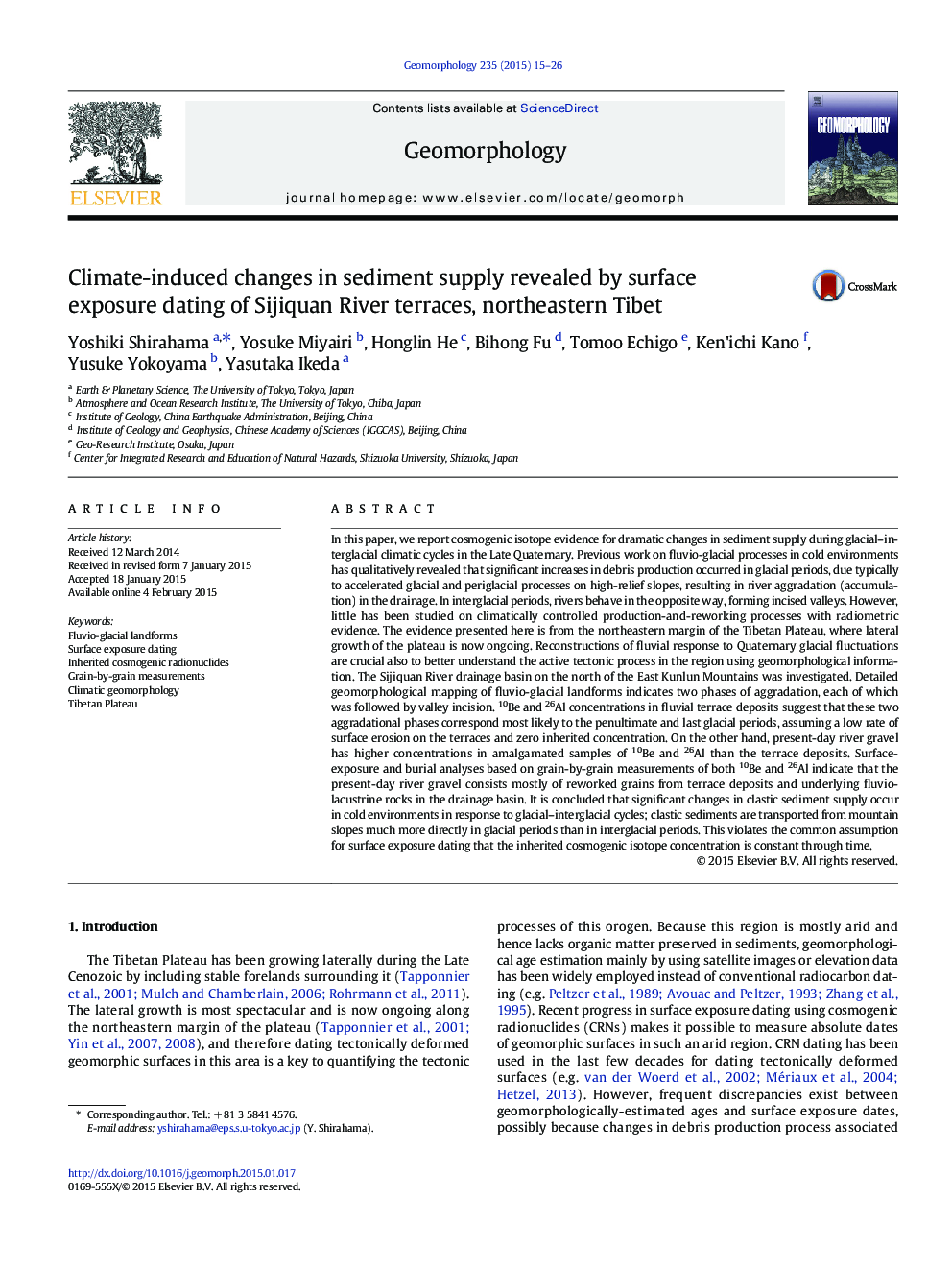| کد مقاله | کد نشریه | سال انتشار | مقاله انگلیسی | نسخه تمام متن |
|---|---|---|---|---|
| 4684233 | 1635414 | 2015 | 12 صفحه PDF | دانلود رایگان |
• Climate-induced changes in sediment supply are evidenced by CRNs (10Be and 26Al).
• Grain-by-grain CRN measurements show that reworking prevailed in the Holocene.
• The last two phases of aggradation occurred in glacial periods.
• In glacial periods, clastics were more directly supplied from mountain slopes.
• The common assumption of constant CRN inheritance through time is no longer valid.
In this paper, we report cosmogenic isotope evidence for dramatic changes in sediment supply during glacial–interglacial climatic cycles in the Late Quaternary. Previous work on fluvio-glacial processes in cold environments has qualitatively revealed that significant increases in debris production occurred in glacial periods, due typically to accelerated glacial and periglacial processes on high-relief slopes, resulting in river aggradation (accumulation) in the drainage. In interglacial periods, rivers behave in the opposite way, forming incised valleys. However, little has been studied on climatically controlled production-and-reworking processes with radiometric evidence. The evidence presented here is from the northeastern margin of the Tibetan Plateau, where lateral growth of the plateau is now ongoing. Reconstructions of fluvial response to Quaternary glacial fluctuations are crucial also to better understand the active tectonic process in the region using geomorphological information. The Sijiquan River drainage basin on the north of the East Kunlun Mountains was investigated. Detailed geomorphological mapping of fluvio-glacial landforms indicates two phases of aggradation, each of which was followed by valley incision. 10Be and 26Al concentrations in fluvial terrace deposits suggest that these two aggradational phases correspond most likely to the penultimate and last glacial periods, assuming a low rate of surface erosion on the terraces and zero inherited concentration. On the other hand, present-day river gravel has higher concentrations in amalgamated samples of 10Be and 26Al than the terrace deposits. Surface-exposure and burial analyses based on grain-by-grain measurements of both 10Be and 26Al indicate that the present-day river gravel consists mostly of reworked grains from terrace deposits and underlying fluvio-lacustrine rocks in the drainage basin. It is concluded that significant changes in clastic sediment supply occur in cold environments in response to glacial–interglacial cycles; clastic sediments are transported from mountain slopes much more directly in glacial periods than in interglacial periods. This violates the common assumption for surface exposure dating that the inherited cosmogenic isotope concentration is constant through time.
Journal: Geomorphology - Volume 235, 15 April 2015, Pages 15–26
